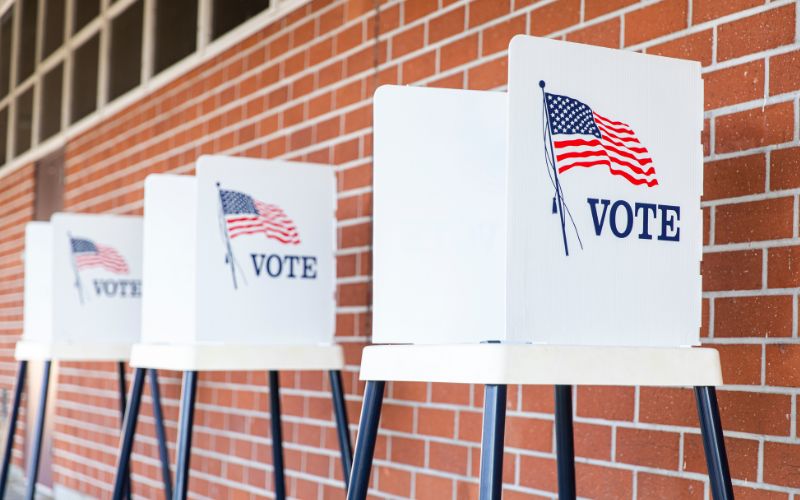
- Details
- By Elyse Wild
Two tribes in Nebraska last week successfully negotiated a court approved redistricting plan with Thurston County to settle a lawsuit in which the tribe's alleged the county intentionally diluted the impact of Native voters.
On January 26, 2024, the U.S. District Court for the District of Nebraska approved a consent decree that requires the Nebraska county to adopt a new district plan to provide Native Americans a fair opportunity to elect candidates to the Thurston County Board of Supervisors. Local elections will use the new map starting in next year's elections and until the next redistricting process begins after 2030.
As a result of historical participation in the 2020 Census, the Native population in the United States grew by an astonishing 86.5%. According to Census Data, in 2021, Thurston County had a population of 6,8000, 60% of which is Native American. The majority of those Native residents are of voting age.
The new map makes it so four of the seven Board of Supervisors districts will provide Native voters with a fair opportunity to elect their preferred candidates, as required by the federal Voting Rights Act (VRA).
This case marks the third time Thurston County has been successfully sued under the VRA for a redistricting plan that violates the rights of Native American voters in the county.
"Native people in Thurston County have thrived against all odds in spite of any setback, and this includes defending Native voters' right to participate in legal and fair elections in Nebraska," Winnebago Tribe of Nebraska Chairwoman Victoria Kitcheyan said in a statement. "We negotiated the new district map with county officials so Native voters will have a fair chance at electing candidates to the Board of Supervisors in 2024."
In 1979, courts subjected Thurston County to a consent decree forbidding the adoption of an at-large voting system as violating Section 2 of the VRA because an at-large system would disenfranchise the estimated 28% population of Native voters in the county at the time.
As a result of another lawsuit, the courts in 1996 required Thurston County to create a legal district map that fairly apportioned the then-estimated 36% population of Native voters per the VRA.
The 2023 consent decree requires Thurston County to create a legal district map that reflects that Native Americans now comprise almost 60% of the county's population and make up a majority of the voting-age population of Thurston County.
During Thurston County's redistricting process after the release of the 2020 Census, the Board of Supervisors refused to implement a VRA-compliant map proposed by both Tribes and instead adopted a map that will now be replaced by a VRA-compliant map as required under the new consent decree.
The court asked the parties to submit briefing on what effect a recent Eighth Circuit opinion had on the court's ability to approve the consent decree. That Eighth Circuit case, Arkansas State Conference NAACP v. Arkansas Board of Apportionment, made the unprecedented ruling that private citizens do not have a right of action under Section 2 of the VRA. However, the judge ultimately found that authority does exist for the Nebraska court to approve the consent decree.
"This case shows that we will keep fighting for our right to vote," said Omaha Tribe Chairman Jason Sheridan. "The new consent decree resolves the third and hopefully last lawsuit against Thurston County to get a legal and equitable redistricting process. The Omaha Tribe is dedicated to fighting any legal battles Thurston County throws at us."
Native American voters continue to historical face disenfranchisement in many states and districts. Polling places located far from remote tribal communities and voter ID laws that prevent citizens living on reservations without traditional street addresses from voting have contributed to Native Americans having the lowest voter turnout of all groups.
Mobilization efforts by Native-led organizations are changing that, however, and Native American voters increascingly play a major role in local and federal elections, according to a new report by the National Urban Indian Family Coalition.
In 2002, South Dakota Senator Tim Johnson (D-SD) was re-elected by 500 votes when the final votes were counted on the Pine Ridge Reservation, according to an investigation by the Native American Rights Fund.
Michigan had one of the closest margins in the 2016 Presidential Election, with a margin of 0.3 percent. With more than 100,000 Native people aged 18 and older in Michigan, the number of Native people eligible to vote was four times more than the margin of victory in the state, according to the investigation.
More Stories Like This
Native News Weekly (August 25, 2024): D.C. BriefsUS Presidents in Their Own Words Concerning American Indians
Flanagan Calls ICE Agents ‘out of control’ after Woman Killed in Minneapolis
American Indigenous Tourism Association Announces New Board Members
Deb Haaland Talks Youth, Jobs and Opportunity in Governor Bid
Help us defend tribal sovereignty.
At Native News Online, our mission is rooted in telling the stories that strengthen sovereignty and uplift Indigenous voices — not just at year’s end, but every single day.
Because of your generosity last year, we were able to keep our reporters on the ground in tribal communities, at national gatherings and in the halls of Congress — covering the issues that matter most to Indian Country: sovereignty, culture, education, health and economic opportunity.
That support sustained us through a tough year in 2025. Now, as we look to the year ahead, we need your help right now to ensure warrior journalism remains strong — reporting that defends tribal sovereignty, amplifies Native truth, and holds power accountable.
 The stakes couldn't be higher. Your support keeps Native voices heard, Native stories told and Native sovereignty defended.
The stakes couldn't be higher. Your support keeps Native voices heard, Native stories told and Native sovereignty defended.
Stand with Warrior Journalism today.
Levi Rickert (Potawatomi), Editor & Publisher


